
Using Comparator Analysis How to Protect Your Self-Insured Healthcare Plan from Waste Fraud, and Abuse Preview of SHRM Fall Conferences TM www.HRProfessionalsMagazine.com Volume 13 : Issue 6 Talking Taboo Chapter 7 Sex, Gender, and LGBTQ Mary Cheddie, SHRM-SCP Divisional Director East Skills for the Future of HR
Is Your Background Screening Partner Missing the Human Element?

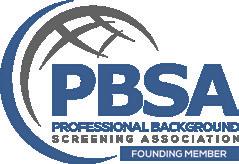













It’s easy for vendors to rely on technology solutions and neglect customer service. Not with Data Facts. Our foundation is built on technology-driven information for people, about people, by people. In addition to our innovative technology, we employ highly trained sta to assist you with every need, and o er live chat on our website supported by real team members. Choose the partner who puts your needs first by o ering a dedicated approach to serving their clients...because you deserve a better experience.
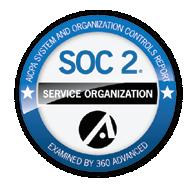


100% US-Based Support Fast & Accurate Results 98.7% Client Retention Rating




222825
2023
2023
Join our monthly webinars to earn SHRM and HRCI recertification credits.


70% of all HR professionals are engaged.


www.HRProfessionalsMagazine.com
Editor Cynthia Y. Thompson, MBA, SHRM-SCP,
Contact HR Professionals Magazine:
To submit a letter to the editor, suggest an idea for an article, notify us of a special event, promotion, announcement, new product or service, or obtain information on becoming a contributor, visit our website at www.hrprofessionalsmagazine.com. We do not accept unsolicited manuscripts or articles. All manuscripts and photos must be submitted by email to Cynthia@hrprosmagazine.com. Editorial content does not necessarily reflect the opinions of the publisher, nor can the publisher be held responsible for errors.
HR Professionals Magazine is published every month, 12 times a year by the Thompson HR Firm, LLC. Reproduction of any photographs, articles, artwork or copy prepared by the magazine or the contributors is strictly prohibited without prior written permission of the Publisher. All information is deemed to be reliable, but not guaranteed to be accurate, and subject to change without notice. HR Professionals Magazine, its contributors or advertisers within are not responsible for misinformation, misprints, omissions or typographical errors.
©2023 The Thompson HR Firm, LLC | This publication is pledged to the spirit and letter of Equal Opportunity Law. The following is general educational information only. It is not legal advice. You need to consult with legal counsel regarding all employment law matters. This information is subject to change without notice.

40 SHRM’s PMQ Summer of Learning
48 WGU – Invest in Your Most Important Asset: PEOPLE
SHRM
7 Register Today for the 2023 Tennessee SHRM Conference & Expo in Chattanooga September 20-22
8 Save the Date! 45th HR Florida Conference & Expo in Orlando
August 27-30
32 Highlights from the 2023 Alabama SHRM Conference in Perdido Beach May 15-17

36 Save the Date! 39th Annual KYSHRM Annual Conference in Lexington
August 29-31
38 Highlights from the 14th Annual WTSHRM Spring Conference in Jackson May 10
41 Save the Date for the One SHRM Georgia Conference & Expo in Lanier Islands October 11-13
43 SHRM Inclusion Conference in Savannah, Georgia October 30 – November 1
July 2023 Issue features Top Educational Programs for HR Professionals, highlights from SHRM23 in Las Vegas, and updates on Employment Law and Employee Benefits.
Deadline to reserve space June 15

SPHR Publisher The Thompson HR Firm, LLC Art Direction Park Avenue Design Marketing and Social Media Specialist Julie Nagem Photographer Charles B. Thompson Webmaster Leo Dimilo Contributing Writers Alexander Alonso LeeAnn Bailes Foster Christina Biddle William Brown William Dent Amy Shabacker Dufrane Ashley Dugger Don Hutson August Johannsen Amber Quarles Sarah Rodehorst Mike Ruggiero Kenneth S. Williams Features 5 6 10 27 34 Talent Management and Recruiting 2 9 14 a Detective 18 When it Comes to Layoffs, Proceed with Caution 20 Who’s Responsible for HR’s Engagement? 26 Hiring Summer Staff? Don’t Shrug Off Your Background Checks! 30 A Powerful 1st Day 31 Compliance with Compassion Team Foster HR Strategy 42 Are You Taking Advantage of US Work Opportunity Tax Credits? Employee Benefits 12 Becoming a Benefits Superhero 13 The Benefits Group – We do all the Work! 22 Communicating Benefits to Your Employees 23 Transform Your Employee Benefits from an Expense to a Competitive Advantage 24 How to Protect Your Self-Insured Healthcare Plan from Waste, Fraud, and Abuse 25 Benefits Claims Intelligence, LLC 35 Highlights from the Greater Memphis Employee Benefits Council May Meeting Employment Law
Using Comparator Analysis 17 Wimberly Lawson – Solving Problems for Businesses and Employers
AI – Taking the “Human Out of “Human Resources”?
16
28
Conferences Update
4 www.HRProfessionalsMagazine.com
W

What an exciting June issue we have for you! It is chock full of highlights from recent SHRM Spring Conferences and previews of more to come! We have highlights from the 2023 Alabama SHRM Conference in Perdido Beach on May 15-17, and highlights from the 14th Annual West Tennessee Human Resources & Employment Law Spring Conference In Jackson May 10.
We have previews of the 2023 45th Annual HR Florida Conference & Expo in Orlando August 27-30 and the 39th Annual KYSHRM Conference in Lexington August 29-31. The 2023 Tennessee SHRM Conference & Exposition is in beautiful Chattanooga this year on September 20-22. Next, we will travel to lovely Lanier Islands, in Buford, Georgia for the One SHRM Georgia State Conference & Expo. It’s going to be another exciting fall in the Southeast! Get your calendars updated and get ready to earn lots of SHRM and HRCI recertification credits!
We are excited to introduce Mary Cheddie, SHRM-SCP, and Divisional Director East for SHRM. In her role, she is responsible for member acquisition and retention, leadership development for volunteer leaders, chapters, and state councils, and creating the value-added proposition for SHRM.

Eastern States plus the Caribbean. Cheddie also leads SHRM’s Together Forward at Work Taskforce, is a member of the SHRM IE&D Council, responsible for SHRMConnect (the memberto-member networking platform) and is a SHRM Ambassador. Cheddie is also a highly sought after speaker where she speaks on leadership, empathy, inclusion, analytics, and transformation. We are looking forward to seeing Mary in Las Vegas at SHRM23! We hope to see you there also!
I am looking forward to speaking at the Volunteer SHRM Chapter meeting in Dyersburg, TN on June 20. My topic is “Interpersonal HR Competencies.” Let me know if your chapter or state conference committee are interested in having me speak at your next meeting. We love to visit our SHRM friends in Southeast! Watch your email for my monthly complimentary webinar sponsored by Data Facts that will be on June 29. You will earn 1.00 SHRM PDC and 1.00 HRCI Business credit. If you are not currently receiving our monthly email invitation, you can subscribe on our website at www.hrprofessionalsmagazine.com.
Happy summer to all!
cynthia@hrprosmagazine.com
90% Pass Rate
Online HRCI PHR | SPHR Certification Prep Class
Online classes begin August 15 and will meet twice per week for 8 weeks on Monday and Wednesday evenings from 6:00 PM to 7:00 PM.
HRCP 2023 Study Materials included:
• Six Study Guides
• Online practice exams for each Study Guide
• 100s of Flashcards
• HRCP materials that are among the most effective study guides available and are easy to read and understand
The total cost of the HRCI PHR | SPHR Certification Prep Class is $900 plus shipping ($25.00).

You may pay by PayPal, Credit Card, or Check.
Guarantee
If you fail the exam, you may retake the class as long as you:
– Attend 80% of the scheduled online classes
– Score 80% on all HRCP practice quizzes during the program
Deadline to register is August 8, 2023
a note from the editor 5 www.HRProfessionalsMagazine.com
Contact cynthia@hrprosmagazine.com OR visit our website at www.hrprofessionalsmagazine.com 2023 2023
@cythomps
Leading a team of Field Service Directors (FSDs), she and her team partner with the State Council and Chapter volunteer leaders focusing on governance, leadership and development training, role and mission, and the volunteer leader life cycle. Her team covers the Midwest and
Mary Cheddie, SHRM-SCP Divisional Director, East Mary
Mary Cheddie, SHRM-SCP is divisional director, East for SHRM. In her role, she is responsible for member acquisition and retention, leadership development for volunteer leaders, chapters, and state councils, and creating the value-added proposition for SHRM.
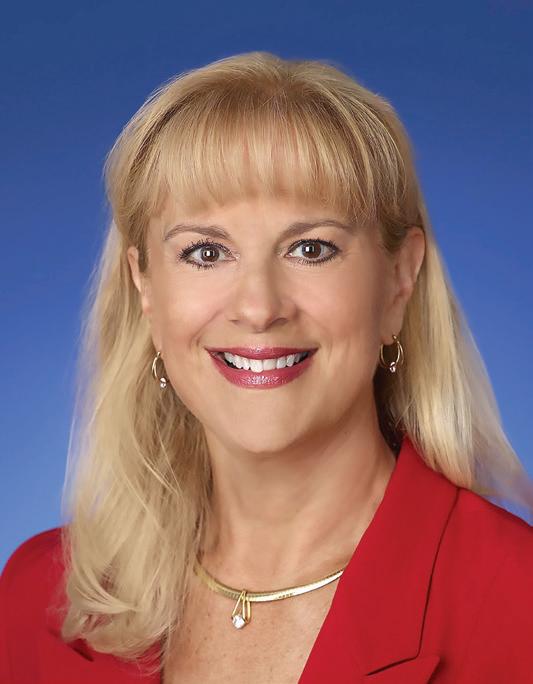
Leading a team of Field Service Directors (FSDs), she and her team partner with the State Council and Chapter volunteer leaders focusing on governance, leadership and development training, role and mission, and the volunteer leader life cycle. Her team covers the Midwest and Eastern States plus the Caribbean. Cheddie also leads SHRM’s Together Forward at Work Taskforce, is a member of the SHRM IE&D Council, responsible for SHRMConnect (the memberto-member networking platform), and is a SHRM Ambassador. Cheddie is also a highly sought after speaker where she speaks on leadership, empathy, inclusion, analytics, and transformation.
As the voice of all things work, workers and the workplace, SHRM serves nearly 325,000 members across 165 countries, impacting the lives of more than 235 million workers and families globally.
Throughout its 75-year history, SHRM's unmatched experience and long-standing commitment to HR professionals, business leaders and policymakers have led to critical advances in workplaces around the world. From providing evidence-based insights through cutting-edge research and technology to elevating conversations around mental health and wellness, SHRM has shaped workplace policies, unleashed pools of talent, championed DE&I and cultivated better workplace cultures.
Cheddie has more than 35 years of executive suite level domestic and international experience in all aspects of human resources and training. She has extensive experience with strategic planning, M&As, and in starting and turning around businesses.
CHEDDIE
Prior to joining SHRM, she served as senior vice president of human resources for Interval Leisure Group, Inc. and its affiliated companies. The company was publicly traded on NASDAQ and the leading provider of vacation services with a global consumer membership base of nearly 2-million-member families, more than 2,500 member resorts in over 75 countries worldwide and had oversight for more than 14,000 employees.
Cheddie also served as senior vice president, people with PRC, as well as vice president, human resources, strategic planning, office services, and facilities for The Orvis Company, Inc. in Manchester, VT.
She earned her MBA from Upper Iowa University, a bachelor’s degree from Thomas Edison State College in Trenton, New Jersey, and is certified as a SHRM-Senior Certified Professional.
Cheddie received the HR Award of Excellence, Hospitality in 2016 from South Florida Business & Wealth. Business Leader Magazine named Cheddie one of the 2011 Women Extraordinaire and in 2012 the National Diversity Council awarded her the Glass Ceiling Award.
She serves on the Board of Trustees for Upper Iowa University, Chaired the Keiser Career College’s Advisory Board, was a member of the Board of Directors for the Society for Human Resource Management (SHRM) from 2003-2008 and chaired SHRM’s governance and compensation committees. Cheddie has been a SHRM member for more than 40 years and volunteer leader for more than 35 years at the national, regional, state, and local levels. She also served on the Waldorf College Alumni Board from 2004 through 2008 and was the President of the Dallas HR Association in 2000 (one of the largest affiliated SHRM chapters). She resides in Southwest FL.
on the cover
6 www.HRProfessionalsMagazine.com







your personal and professional leadership development through a wide variety of learning opportunities designed to help you effectively navigate the ever-changing world of HR. Make your investment of time in attending the conference count even more by earning continuing education credits.
be encouraged and equipped to lead more effectively in your organization.
20-22, 2023
Presenters
Cultivate
Come
September
Keynote
DEREK YOUNG
Speaker DICK FINNEGAN Author and Speaker JESSICA STOLLINGS-HOLDER Author and Speaker Join us in Chattanooga Register by August 31and save $100* M MORE INFORMATION www.tnshrm.org *Compared to late registration rate *Rooms outside the block may be availble at www.marriott.com
RANDY BOYD President University of Tennessee
Author and
KEYNOTE
KEYNOTE
KEYNOTE







Cara Brookins A testament to resilience and strength, this software coder rebuilt her life by constructing a home for her broken family using YouTube tutorials in a story that went viral.
Ryan Leak Inspiring workplace cultures rooted in values, passion and risk taking. Using humorous wisdom and moving narrative to inspire people to become the best version of themselves. Author of Chasing Failure
Robyn Benincasa World champion adventure racer, 2014 CNN Hero, full time firefighter, New York Times best-selling author, 3x Guinness World Record Endurance Kayaker SEIZE THE OPPORTUNITY HR F L ORI DA Rosen Shingle Creek | 9939 Universal Boulevard | Orlando, FL 32819 THE 4 5 TH ANNUAL WHY ATTEND? •Largest HR Conference in the Southeast •Opportunity to Network with 2,500 Attendees •Over 110+ Sessions of Valuable Insight •Recertification Credits REGISTER AT HRFloridaConference.org SAVE THE D ATE CONFERENCE & EXPO AUGUST 27 – 30, 2023
Skills for the Future of HR
By ASHLEY DUGGER and AMBER QUARLES
As we hear frequently, the world of work is shifting - thus, HR must also shift to proactively prepare for new employer and employee needs and demands in the workplace. Even since the start of the pandemic we have seen a tangible shift in the call for more flexible, remote, or hybrid HR based positions but also for these types of working arrangements in almost all industries, meaning HR must not only look at how they create flex working opportunities for HR professionals but also for the employees in their workplaces to meet employee demand. HR can expect to continuously see a stronger need for strategic, critical, and design thinking for solutions to problems; the flexibility and resiliency to adapt and iterate will be needed for all HR positions. A confidence level working with data and using that data to tell compelling stories to influence leaders, resource allocation, and HR to business strategy alignment will be critical for HR success.
Employees are (rightfully) demanding supportive, healthy, balanced organizational cultures more so than ever, and this may mean a rise in HR positions solely dedicated to employee experience, cultural change management, and retention. HR technology and L&D positions will also continue to evolve as AI and virtual reality become staples in the employee experience in the future. Working with leaders to bridge generational gaps in the workforce and better understand how employees from different generations and backgrounds are motivated to perform will also be crucial for workplace success. As noted by recent SHRM research, looking forward to 2030 HR can anticipate more roles in fields like digital training, HR apps for employees, growing people experience departments, org culture/teamwork specialists, data scientists and remote/flex work specialists are all areas and positions primed to see growth and stronger involvement in the workplace.
With artificial intelligence (AI) becoming increasingly prevalent in our daily lives, from chat bots while we are shopping online, to navigating websites, among other things, there could be many benefits to providing high quality candidates paired with greater efficiencies and fairness within our recruiting departments and processes. To start with, AI could make an immediate positive impact, increasing the volume of applicant screening in a competitive workforce. This would allow HR professionals to screen all applicants as opposed to cutting off application acceptance due to workforce constraints and limitations. Additionally, AI would eliminate the possibility of bias and/or discrimination within the initial phases of the recruiting process which could lead to a more diverse workforce, focusing on the knowledge, skills, abilities, and experience of candidates without consideration of any information regarding protected classes under title VII. In other words, AI could help recruiters attain the highest quality candidates in the job market and filter them to recruiters for initial interviews, leaving more time for recruiters to focus on top candidates from the start!
With the vast amount of change and growth that the human resource profession has seen over the past decade, it is critical for HR professionals to upskill and/or reskill as a regular part of their professional development. Sometimes it can be difficult to know where to focus one’s efforts. The best way to navigate how to get the most out of the upskilling process is to ask yourself key questions like:
What are my career goals?
Do I want to focus on specific areas of HR or be skilled in a variety of different HR functions?
Do my new skills need to be industry specific?
· Do I have a timeline for certain aspects of the upskilling process?
Answering some of these questions can help lead to a path where you are not only developing relevant and up-to-date skills but also taking the path that is the best fit for your professional growth and aspirations. Some tips to get started can be finding a mentor that has done what you want to do, follow the latest HR news and trends, check out profiles of the most influential people in the industry to see where their current focus is, certifications they hold, and regularly review job posting requirements for career paths you are interested in following.
HR professionals must have a continuous plan in place for ongoing upskilling and reskilling and lean into the new world of HR as it evolves. Easily accessible resources such as LinkedIn Learning, SHRM webinars, certifications and specialty credentials, and skill-based workshops versus more traditional conferences are all tools that HR professionals should be planning to engage with to ensure their skillsets are meeting company and hiring demands for HR success!
Visit WGU at the SHRM Annual Conference and Expo, June 11-14 in Las Vegas, at booth #4010 to learn more about our new MSHRM degree launching in November!
Ashley Dugger, DBA, SHRM-CP ashley.dugger@wgu.edu

Dr. Ashley W. Dugger began her career in higher education leadership and has since focused on operational leadership and human resource management. Ashley holds an earned Doctor of Business Administration degree with a focus in Management, MBA in International Business, BS in Business with a focus in Marketing, and the SHRM-CP certification. She serves in the role of Associate Dean and Director of HR and Organizational Psychology programs in the College of Business at Western Governors University. Her areas of expertise include strategic human resource management, higher education administration, organizational culture, change management, leadership, adult education, learning and development, and online/blended faculty effectiveness. Ashley has presented for organizations such as ACBSP, Online Learning Consortium, SHRM, and CUPA-HR. Her work has been published and featured with HR Professionals Magazine, Talent Management, Chief Learning Officer, and Higher Ed HR Magazine. She volunteers regularly with local animal rescues in the central Virginia region where she lives with her husband, Danny and their Australian Shepherd, Dexter.
Amber Quarles, PhD, MHRM
 amber.quarles@wgu.edu
amber.quarles@wgu.edu
Dr. Amber Quarles is originally from the mountains of Northwest Georgia, however her husband’s Navy career landed her in sunny southern California. She attended undergraduate school in southeastern Pennsylvania at Gwynedd Mercy University, where she simultaneously began her career in Human Resource Management. Quarles worked her way through the ranks of corporate human resources from HR Coordinator to HR Director, giving her a great deal of experience to utilize in the classroom and with faculty. Following the completion of her Master’s degree in Human Resource Management, Quarles was inspired to embark on a career in higher education, which eventually led her to pursue her Doctorate in Organizational Leadership. While Quarles spent years working in various corporate human resource environments, she has enjoyed her transition to academia and service leadership roles. Quarles attributes her passion for service, to great professors and service leaders in her past, and the support of her husband and two children.
9 www.HRProfessionalsMagazine.com
We are honored to present our seventh installment of Talking
Taboo

Making the Most of Polarizing Discussions at Work
BY ALEXANDER ALONSO, PHD, SHRM-SCP ALEX IS SHRM’S CHIEF KNOWLEDGE OFFICER.
Chapter 7
Sex, Gender, and LGBTQ
Building an inclusive, equitable, diverse, and respectful workplace that works for everyone can be difficult. People continue to experience harassment, discrimination, and unequal or preferential treatment on the job because of their gender or sex, who they are or who they love. LGBTQ workers (lesbian, gay, bisexual, trans, queer/questioning), unfortunately still face challenges and conscious or unconscious prejudice and bigotry from colleagues. These stories describe how HR usually (but not always) rises to the occasion to deal with behavior at odds with organizational values and principles.
AN EMPHASIS ON EXCELLENCE EXPLODES CULTURAL PREJUDICES
In a bid to increase diversity and raise international standards at a large prestigious school, its board of directors appointed as the new principal a nonnative woman with impressive experience. She had the track record needed to increase students’ exam scores and drive enrollment.
In the region where the school was located, however, proponents of the local religion and culture were unaccustomed to seeing women who were highly educated or in positions of authority, especially if they were relatively young and unmarried, as the new principal was. She became frustrated by the vast opposition she faced. The school administrators were mostly older married men, who neither showed deference to the principal nor supported her ideas and strategies.
10 www.HRProfessionalsMagazine.com
Faculty received conflicting instructions about how to respond to her directives. Parents didn’t understand how a woman could be an expert in the field and didn’t trust her to educate their children. The students lacked the help they needed to perform better on their international exams.
In the absence of a single vision or unity in administration, the school began to see a decline in motivation, commitment, and confidence in both staff and students. Something had to be done to ensure that the situation didn’t deteriorate further.
As a global HR consultant, I was brought in to assist the board of directors and the new principal. The issues to be considered included the following: the school’s success rates and future plans; staff productivity and retention; student enrollment, diversity, and achievement; the working environment; levels of authority; and the value each person brought to the school. Our timeline was dictated by the exams coming up in a few months.
I made four main recommendations for action. First, empower the principal to assert her authority over the administrators. The board of directors would ask those who remained insubordinate to resign. Second, encourage personal interactions between the principal and teachers so that she could communicate her strategies to them directly. Third, conduct seminars and workshops with the principal and parents, giving them an opportunity to appreciate her intellect and experience. Finally, compile and distribute a detailed profile of the principal, enabling everyone to recognize her achievements.
These actions were implemented. At a public meeting before the whole school, the executive director of the board affirmed that the new principal was in charge, making it difficult for anyone to defy her instructions afterward. She indeed asserted her authority in subsequent meetings. Only one school administrator persisted in being insubordinate, and he was eventually asked to resign despite his years of service. No one is indispensable when they do not comply with known policies and procedures.
The principal met regularly with teachers to monitor interventions and measure their performance. She sought feedback from students to gauge their understanding of their subjects and commitment to learning, and she also held motivation sessions with them in preparation for their exams. The result was significant improvement in staff engagement and productivity (assisted by a new compensation scheme) as well as in student confidence and comprehension. Teachers and parents saw marked differences. We anticipate higher success rates, an increase in enrollment, and greater diversity in the school.
Read the entire Chapter 7 at www.hrprofessionalsmagazine.com
11 www.HRProfessionalsMagazine.com
Everyone in HR would immediately scream, Defeat the supervillains!"
It's a funny question, but what isn't so funny is trying to attract and retain top talent in the real world. And it's not just about "fickle" employees or "too much competition." With 76 percent of employers having been 'ghosted' by a candidate and a labor force participation rate of around 62 percent, it's getting tough out there.
Becoming a Benefits Superhero
So, here you are, trying to remain culture-minded and budget-focused while you craft the most appealing compensation packages. Your mission?
To attract, interview, hire, and onboard employees who will fit with the company culture and stay loyal and grow in value. That's a lot to handle, even for superheroes.
The solution is multi-pronged, and no one person has al the tools needed.
In fact, every superhero needs a team. With their team they are unstoppable.
So who's on your team? Right now, I bet you have a league member you think of maybe once a year during renewal season. And yet all year long what they provide to your team is instrumental to everyone's health, oyalty and very lives.
I'm Will Brown and I'm a broker crusader" to my clients-to HR professionals like you who want to be superheroes in the eyes of their employees. But what about rising costs? Insurance premiums are rising more quickly than inflation That's why you need a broker who:
• Understands the levers that drive premiums.
• Knows how to search for creative strategies.
Recognizes employee goals, so you only pay for the insurance perks your team needs.
By WILL BROWN
• Performs a thorough yearly analysis rather than adopt the "set and forget" attitude that plagues most brokerages.
At The Benefits Group, we are defying the "order-taker" broker stereotype. We see that small- to mid-sized businesses are being underserved in their ability to offer Fortune 500 benefits to their employees. And we're doing our best every day to change that.
Can a benefits broker change the world? For your employees, believe we can. We thrive on getting the best deals and beating the market. In virtually every competitive situation, we win. Not all heroes wear capes. But we're ready to make you look like a superhero to your employees. Let your employees see how much you care through the affordable benefits you offer.
Stop looking for a “one-size-fits-all” health insurance solution. Thanks to cost-varying factors such as employee demographics, changing conditions, multiple product levers, and your state, it doesn’t exist. There’s also no guarantee of “hands-off” benefits. The right option may include a combination of effort from you, your employees, and your broker—but this is not too much to ask from:
Let us turn you into a Benefit Superhero!
• HR professionals who love what they do
• Quality employees who value loyalty
• Brokers who thrive on finding unique solutions.

“Okay, but Will—what kind of effort are we talking about?”
Good question. Let’s look at a few options requiring a little effort for some big payoffs.
Could you save more with a level-funded plan? Level-funded plans (a form of self-funding without the liability) take more work on the front end. There are health questionnaires. Then you factor in locking in finalized quotes for enrollees—all before they actually enroll. It can feel like trying to hit a moving target, BUT it can save 20 to 40 percent on premiums!
Could you save more with reference-based pricing? What about reference-based pricing? Many brokers will tell you, “Don’t do it!” but this is likely because they don’t want to explain it, or they may not understand it. When you break it down, reference-based pricing: 1) standardizes rates, 3) removes networks, so you go anywhere you want, and 3) limits exposure to only what the plan pays. And what’s the punctuation mark? Premiums that run up to 50 percent less. But this approach takes education on the front end and requires employees to understand the plan.
Hey, saving ain’t easy!
Which benefits are ideal for young adults? Other plans exist that limit the benefit to 1) a defined amount or 2) a specific number of visits. While that may not be for everyone, it may be perfect for young, healthy employees who recently rolled off a parent or guardian plan and are new to benefits.
How vital is out-of-network coverage? Then, you must consider the levers driving the costs, such as in-and-out-of-network costs. Large provider networks offer Exclusive Provider Organizations (EPOS) with NO out-of-network benefits. But if you have a large enough national carrier, that’s generally not a concern. Thanks to the Affordable Care Act, emergency treatment is always considered in-network. And the need for out-of-network providers remains limited thanks to the recently enacted No Surprises Act (NSA). Maybe it’s not worth the extra premium, or maybe it is. Either way, you deserve the opportunity to consider it.
Do you really need multi-tiered pharmacy benefits? The right broker will also help you consider whether to pay for robust pharmacy benefits and multi-tier copays when your employees may not utilize expensive drugs.
How are your broker’s math skills? Additionally, many employers and employees would not “buy down” their deductible if they knew the true cost of that deal. Some plans require more in premium dollars than you save in decreased deductible. For example:

Your plan has a $2,500 deductible, but your employees say they want a smaller one. The new $1,000 deductible plan costs $200 more monthly ($2,400 annually) in additional premiums. So, you “saved” $1,500 worth of deductible but now pay $2,400 more annually. That’s a lousy deal.
Sticking with the higher premium could make more sense. Then give employees a chance to contribute to an HSA or HRA account to make the deductible “feel” lower. The right fiduciaries can help you set up HSA and even 401k plans for a few dollars per employee per month, and the setup and administration are easy.
Are you offering telehealth? Telemedicine is an increasingly sought-after benefit, and you need to be offering it. Can your employees get a real doctor on the phone or video chat from the privacy of their home for any healthcare or mental health concern?
Are you offering learning management tools? Additionally, there are learning management tools that your employees could be interested in using. Personal enrichment and educational/technical advancement programs are becoming more sought after as our workforce transitions to a millennial-heavy demographic.
Are you leveraging the halo effect? Even if you don’t have a lot of employee participation in the first year or two of setting up a new plan, the “halo effect” eventually takes effect, where employer perception increases and, by extension, your team members’ loyalty to you. Your team can tell when you put in the effort to make them feel valued—and by nature, human beings are loyal to those who appreciate them (and don’t just say it but prove it).
Most brokers present generic, prepackaged offerings that look okay until you start poking around under the hood. So, the benefits sit on the proverbial shelf, underutilized and overpriced. But you have so many options when you work with the right broker. You CAN offer Fortune 500 benefits, be a superstar, and attract and retain top talent. You simply need the correct partner.
If nothing else, I hope you feel ready to ask your broker some new questions and understand that you have FAR more options than you realize. I’d love to show you what creative and valuable solutions The Benefits Group can provide. Let’s talk about curating the best plan for your team at: www.thebenefits.group
By William Brown, CPA Pretend you live in a dystopian world where villains terrorize the planet and superheroes are the only things standing between order and chaos. To save humanity, this league of heroes must make a choice: 1) defeat a band of supervillains or 2) hire and retain a team of valuable, loyal employees.
12 www.HRProfessionalsMagazine.com
Everyone knows offering a robust benefits package can attract and retain top talent. That’s been drilled into us for years. But the reality is cost and creativity often get in the way. So, let’s cut to the chase—while it’s good to be on-trend with creative fads in HR, what matters most is creating a foundational offering that doesn’t just look good but provides genuine value and cost savings.

• 13 www.HRProfessionalsMagazine.com
How to Assess Body Language Like a Detective
By MIKE RUGGIERO
He killed the guy. I was convinced. That’s where all the evidence pointed.
But as the detective assigned to the case, I knew the cherry on top of this investigation was a truthful confession. The problem? I was in a race against time with, of all people, a surgeon. It appeared that the suspect had committed the murder, then attempted to cover up the crime by burning the building down. But his attempt resulted in severe burns, which required immediate surgery. Thus, the surgeon and a ticking clock.
So, I did what many of you could do during a critical discussion. As we spoke, I watched his body language for signs of truthfulness or deception.
Leaning on years of experience and training, I’ve taught Detecting Deception to professionals nationwide for several years. Detecting Deception covers the three ways in which we communicate:
Handwriting
Body Language
Statement Analysis
In gaining more knowledge on how people communicate and when they are deceptive (or truthful), we have far more insight into what may be making people uncomfortable and where we want to focus our questions.
While I’d like to go through the three separate skill sets in detail, let’s settle for a few simple things you can watch for in the realm of body language.
Body Language
You’ve probably heard that 93% of our communication comes from our body language. I’m not sure the figure is that high, but paying attention to someone’s body language often provides clues into what they are thinking and signs of anxiety.
Remember, certain body language doesn’t signify deception; it signals anxiety. When placed in the context of an interview, the anxiety is likely because the person is being deceptive. That’s why devices such as the polygraph, often called Lie Detectors, are stress detectors!
So, what part of the body should we pay attention to?
The part of the face known in body language circles as the Lair’s Triangle. The Liar’s Triangle is the area over the eyebrows to the ears and down to the chin (see photo below). We want to pay attention to movement in this area as most people tend to go there when under stress.

The Liar’s Triangle
Let’s begin at the center of the Liar’s Triangle –the nose.
The suspect kept staring at the ceiling as we spoke. He was mentally leaving the interview and having an inner conversation. He wished he was somewhere else, and probably I was too! So, I told him that. I told him I wasn’t going anywhere, and he needed to return and talk to me.
Psychologically, I now had the advantage. Now he was thinking that I even knew his thoughts. He mentally returned, and just before the medical team arrived, he confessed to both arson and the murder.
Body language is often reliable because it’s hard for people to control it consciously. For instance, their energy is directed toward speaking, and the body moves naturally, without conscious thought. Therefore, if words and body language send conflicting messages, relying on body language is often a good idea.
Conclusion
When under stress, people tend to go to their noses. When gauging body language, we want to pay particular attention for 0-6 seconds after being asked a question. This connects the response to the stress being caused by the question.
Someone who rubs or scratches their nose immediately after being asked a question is probably experiencing elevated stress levels due to that question.
This is true of males and females, as well as people from different backgrounds and cultures. Why do you think that is? Because stress causes physiological changes within our bodies. You have probably heard of the Fight or Flight response. When this occurs, the body’s survival instinct causes an elevated heart rate as more blood is pumped to the vital organs.
The nose is a vital organ as it gives us air to breathe.
The nose also contains the thinnest membranes in the body. Blood being pumped to the nose causes the membranes inside the nose to tingle and, therefore, itch. That’s why we have the urge to scratch or rub our nose to relieve the itch. Pay attention to your nose the next time you are in a stressful situation!
But it wasn’t the nose that caused our arsonist to confess. It was the eyes.
That’s just two of the many points in Detecting Deception. Having the ability to detect deception by being familiar with these skill sets will put you on a different level than most of your colleagues. Not only will you know if someone is being truthful or deceptive, but you will also be able to articulate why. You can gain insight into their personality, relationships, and self-esteem issues. Then, utilize your interview skills to dig down and get the truth by asking the right questions.
ABOUT THE AUTHOR:
Detective Sergeant Mike Ruggiero spent 35 years in law enforcement with the Orange County Sheriff’s Office in Orlando, Florida. He has 25 years of experience investigating major cases, such as Narcotics, Sex Crimes, Internal Investigations, Robbery, and Homicide. Mike now provides training across the U.S. to police detectives, private investigators, and Human Resource professionals. You can read more on this topic in Mike’s book, Uncover the Truth: Unlocking the Skills of Body Language and Statement Analysis, available on Amazon.
In addition, Mike offers seminars and webinars tailor-made for HR professionals, security officers, and corporate investigators through SafeHaven Security Group, LLC. Learn more by emailing experts@SafeHavenSecurityGroup.com or 844-SAFE GROUP.

14 www.HRProfessionalsMagazine.com

Employment discrimination involves situations where an employer is pline based on a person’s legally protected characteristics such as age, race, sex, religion, or national origin. Most of these matters fall under the §§ 2000e - 2000e17 (as amended), known as Title VII, but many other federal and State statutes protect against employment discrimination. Examples include The Age Discrimination in Employment Act of 1967 (ADEA); 27 U.S.C.A. § 63D et seq. and The Equal Pay Act of 1963 as amended, 29 U.S.C. § 206(d).
Intentional discrimination claims can be proven in two ways. The first involves direct evidence of discrimination, things seen or heard such as statements or emails, and other “smoking gun” proof, and normally resulting from the acts of supervisors having a meaningful role in the decisionmaking process. If direct proof is believed, then it can be concluded that discrimination was a motivating factor in an employer’s decision.
It is relatively rare for an employee to show workplace discrimination by direct proof. Instead, most employees must present indirect or circumstantial evidence to establish discrimination. Fifty years ago, the U.S. Supreme Court adopted a burden shifting analysis to evaluate discrimination claims shown by indirect proof. See McDonnell Douglas Corp., 411 U.S. 791, 98 S.Ct. 1817; 36 L.Ed.2d. 668 (1973). Under the McDonnell Douglas framework, an employee must first establish a prima facie case of discrimination. If successful, then the burden shifts to the employer to state a legitimate, non-discriminatory reason for its actions. Finally, the employee must demonstrate that the reasons for the employer’s actions were insufficient, or pretextual, making the question of discrimination one for the jury to decide.
Under McDonnell Douglas, to establish his or her prima facie case, an employee must show, by a preponderance of the evidence, that he or she (1) was a member of a protected class; (2) suffered an adverse employment action; (3) was qualified for the position; and (4) was replaced by someone outside the protected class or was treated differently than similarly-situated, non-protected employees. If an employee cannot show all elements of his or her prima facie case of discrimination, then the claim will be dismissed.
Using internal data and information, employers have the opportunity to challenge an employee’s circumstantial discrimination claims at the prima facie stage. Specifically, to survive dismissal the employee must establish that he or she was treated differently than similarly situated, non-protected employees. This is done through what is called comparator evidence, attempting to show that one or more other employees, not in his or her protected class, were treated more favorably or leniently in terms of hiring, firing or discipline. Examples would include comparing the treatment of workers of different races, or a female alleging that males are held to different standards.
Recently, in Blount v. Stanley Engin. Fastening, 55 F.4th 504 (6th Cir. 2022), the Sixth Circuit addressed comparator proof where race discrimination was alleged in the context of an employee termination. The Blount case sheds light on ways to prove, or disprove, this element of the prima facie case. In the Sixth Circuit comparator characteristics need not be identical, but to be considered a bona fide comparator, one must
Using Comparator Analysis to a Company’s Advantage
 By KENNETH S. WILLIAMS
By KENNETH S. WILLIAMS
be shown to be similarity situated in all relevant and material respects, engaging in acts of comparable seriousness. Superficial similarity of employees, standing alone, will be insufficient to carry the employee’s burden of proof.
Comparisons of unlike things, such as one employee’s theft being compared to another’s attendance violations, are obviously dissimilar. Other comparisons will require a more detailed analysis, and various factors are considered in evaluating similarities between employees. These include whether the comparators engaged in the same conduct, dealt with the same or a different supervisor, or were held to the same or differing standards of conduct. The degree and type of misconduct by comparators is also important, and the misconduct must be sufficiently similar in both type and degree. Other differentiating or mitigating circumstances are also examined which might distinguish conduct between comparators, such as differences in job titles or responsibilities, work experience, and past work and disciplinary records. Conduct standards for a manager, for example, are likely dissimilar when compared to an assistant manager or hourly worker. A comparator’s disciplinary warnings or negative performance reviews, standing alone, are probably insufficient to show substantial similarity in the absence of similar work issues. Whether or not the employee was on probation when the comparator was not is a consideration as well. For workplace safety violations, comparators may be dissimilar if the employee risked injury to others but the comparator only risked injury to himself or herself, if one injury risk is minor compared to the other, and when repeat safety violations are contained in the employee’s file but are absent in the comparator’s file.
Comparator analysis can be fact intensive. The employee bears the burden of proof at the prima facie stage and will likely present one or more comparators to show less favorable treatment. Because of its workplace familiarity, a company’s human resource team plays an important dual role in any comparator analysis. For the employee’s comparators intended to show less favorable treatment, the human resources team can assist counsel by flagging dissimilar facts and characteristics distinguishing comparators. Equally important is the ability of the human resources team to ferret out and locate other workplace comparators, who can be used by counsel to show consistency and equality of treatment across age, sex, race, or other classes.
Comparator analysis, of necessity, involves the use of employment records of other past and present employees. For that reason, it is crucial to recognize the value of documenting all factors relevant and considered in decisions to hire, fire or discipline. A proper paper trail showing consistency of treatment is a great tool for counsel, the court, and a jury. The company should always strive for consistent and evenhanded treatment of all employees across all classes because the strength or weakness of any comparator analysis correlates to the equality of treatment in the workplace.
Kenneth S. Williams kwilliams@wimberlylawson.com Cookeville Office Of Counsel

16 www.HRProfessionalsMagazine.com
SOLVING PROBLEMS FOR BUSINESSES AND EMPLOYERS
The focus of our practice at Wimberly Lawson Wright Daves & Jones, PLLC is primarily on Labor & Employment law and Workers’ Compensation, together with General Liability defense, for businesses and professionals, insurers, and governmental entities. We have offices in Knoxville, Cookeville, and Nashville, Tennessee, and serve clients both nationally and internationally. Our attorneys use a number of preventive and cost-effective methods to maximize employee benefit dollars as well as avoid costly legal problems. We also present educational seminars on a wide variety of topics, including critical issues for employers regarding the current COVID-19 situation. The Firm has been recognized for various coveted rating awards including:


• U.S. Top Ranked Law Firms by Fortune Magazine;
• Best Law Firms by U.S. News & World Report; and
• Martindale Hubbell Peer Review Rated Award by Martindale-Hubbell.
For more information or to sign up for our free newsletter, please visit us at www.wimberlylawson.com
Knoxville Cookeville Nashville 931-372-9123 615-727-1000 865-546-1000
When It Comes to Layoffs, Proceed with CAUTION
By SARAH RODEHORST
HRprofessionals are familiar with the WARN Act, known formally as the Worker Adjustment and Retraining Notification Act which went into effect in 1989. It’s an easy one to remember since it requires employers to provide written advance notice in situations of qualified plant closings and other mass layoffs. Created to protect employees, their families, and communities by requiring that employers provide sixty calendar days advance notification, the lead time allows everyone involved to prepare for the transition and brace for potential impact.
The WARN Act is a federal act that targets employers with 100 or more employees. Failure to adhere to the WARN Act is costly; employers that violate it are liable for an amount equal to back pay and benefits for the period of the violation (up to 60 days) for every affected employee. Not to mention the possibility of individual or class action lawsuits.
Repeat after me: As an employer, it is your responsibility to understand your organization’s obligations. Being WARN Act-savvy might feel like enough to ensure compliance when layoffs are imminent. Nothing could be further from the truth. Not only have workforces and workforce reductions become increasingly complex (especially with remote and hybrid work arrangements), but state WARN laws have also come into effect. Many of them have even stricter requirements than the federal WARN Act and differ in terms of thresholds and definitions. And while compliance with the state WARN statutes was considered voluntary, mandatory requirements and enforcement mechanisms are being added.
Here are some insights into select state mini-WARN Acts:
Georgia
Georgia adheres to the provisions created by the federal WARN Act. There are specific WARN Act triggers for Georgia employers:

• Closes a facility or discontinues an operating unit permanently or temporarily, affecting at least 50 employees, not counting part-time workers, at a single employment site. A plant closing also occurs when an employer closes an operating unit that has fewer than 50 workers, but that closing also involves the layoff of enough other workers to make the total number of layoffs 50 or more;
• Lays off 500 or more workers (not counting part-time workers) at a single site of employment during a 30-day period; or lays off 50-499 workers (not counting part-time workers), and these layoffs constitute 33% of the employer’s total active workforce (not counting part-time workers) at the single site of employment;
• Announces a temporary layoff of less than six months that meets either of the two criteria above and then decides to extend the layoff for more than 6 months. If the extension occurs for reasons that were not reasonably foreseeable at the time the layoff was originally announced, notice need only be given when the need for the extension becomes known. Any other case is treated as if notice was required for the original layoff; or
• Reduces the hours of work for 50 or more workers by 50% or more for each month in any six-month period. Thus, a plant closing or mass layoff need not be permanent to trigger WARN.

Maine
Maine follows the parameters of the federal WARN Act with one significant difference. Maine requires a 90-day notice of a covered establishment, which is closing or relocating. "Covered establishment" means any industrial or commercial facility or part thereof that employs or has employed at any time in the preceding 12-month period 100 or more persons.
The Maine mini-WARN states that any employer who closes or engages in a mass layoff at a covered establishment is liable to eligible employees of the covered establishment for severance pay at the rate of one week's pay for each year, and partial pay for any partial year, from the last full month of employment by the employee in that establishment. The severance pay to eligible employees is in addition to any final wage payment to the employee and must be paid within one regular pay period after the employee's last full day of work, notwithstanding any other provisions of law.
18 www.HRProfessionalsMagazine.com
New Jersey
Effective April 10, 2023, recently signed legislation amends New Jersey’s NJWARN. Amended NJWARN includes a new provision that provides, “For purposes of this section [the section requiring notice and severance pay], “employer” includes any individual, partnership, association, corporation, or any person or group of persons acting directly or indirectly in the interest of an employer in relation to an employee, and includes any person who, directly or indirectly, owns and operates the nominal employer, or owns a corporate subsidiary that, directly or indirectly, owns and operates the nominal employer or makes the decision responsible for the employment action that gives rise to a mass layoff subject to notification.”
This language expands the range of individuals and businesses that can be held liable for the mandatory severance pay, including potential managers involved in the decision to lay off employees, corporate officers, and private equity firms involved in the sale or purchase of a shuttered business.

Like Maine, New Jersey also requires 90-day notice. Amended NJWARN provides that employees who are denied the required 90 days’ notice are entitled to four weeks of severance pay as a penalty, in addition to the greater of (i) one week of severance pay for each year of service, or (ii) any severance pay to which they are otherwise entitled under a collective bargaining agreement or other policy/plan of the employer.
As you can see, the level of detail in the WARN and mini-WARNs is intense. Among the states with mini-WARN acts are California, Connecticut, Florida, Hawaii, Illinois, Iowa, Kansas, Maine, Massachusetts, Michigan, Minnesota, New Hampshire, New Jersey, New York, Oregon, Rhode Island, South
Carolina, Tennessee and Wisconsin. The city of Philadelphia also has its own WARN Act. Staying abreast of the compliance requirements of these Acts is more than a full-time job, not to mention a specialty that might be rarely used by the HR team.



Limiting liability during layoffs requires a knowledge of the federal and state WARN Acts, coupled with the ability to run a disparate impact analysis for all layoffs companywide. It’s the only way to ensure the layoff isn’t having a negative impact on certain workers based on age, race, or gender. Layoffs are stressful, especially for HR professionals, which is why planning ahead, staying current on relevant federal and state laws and partnering with a vendor that specializes in compliant offboarding is necessary.

Sarah Rodehorst is an influencer, thought leader, visionary, and business leader. She has held leadership positions at startup and Fortune 500 companies and now leads Onwards HR as CEO and co-founder. As a women-in-tech evangelist and diversity, equity, and inclusion champion, Sarah’s thoughts on layoffs, women in technology, and DEI in the workplace have appeared in publications including Wall Street Journal, CNN Business, NPR, SHRM, HR Professionals, HR Executive, HR Brew, and Vibe. In 2021, she was a Women in Technology Woman of the Year Finalist in Engineering.

hello@onwardshr.com | onwardshr.com Select & Justify Calculate Severance Assess Compliance Generate Documents Notify & Offboard Stay compliant with corporate policy and employment laws Provide a supportive and respectful exit experience Improve productivity and shorten timelines using automation Mitigate risk using case management and DEI analytics Offboarding Done Right A platform dedicated to protecting the company and creating loyal alumni 19 www.HRProfessionalsMagazine.com
Who’s Responsible for HR’s Engagement?
By AMY SHABACKER DUFRANE
So much about employee engagement has been researched and reported in the last few years. Gallup estimates a marked decline in employee engagement since 2020, the first falling-off in over a decade. Despite uncertain economic indicators, organizations struggle to attract, recruit, and retain qualified talent. Advancements in people analytics have provided more insights but haven’t really identified the underlying factors that matter most to talent segments.
The toll of driving employee engagement is yet one more stress on HR. Burnout levels among HR professionals who have served on the frontline of the global talent crisis throughout the pandemic are high. And, with all the focus on qualified talent and employee engagement, little is done to focus on HR. Are we shoemaker’s children without shoes? Somedays, it feels that way.
HRCI recently conducted a study in partnership with Drexel University, a top 100 Carnegie Research institution and global leader in experiential education. The sample population of 2,032 was drawn from our impressive roster of HR professionals and the corollary purpose of the research was to examine engagement drivers, specifically to what extent organizations implement talent management practices for HR professionals.
Hold your hat. There’s more to engaging HR than you might think.
First, HR professionals were asked to rate the drivers that have the biggest impact on their own engagement. It’s no surprise that an ethical workplace; trust & integrity in leadership; a compassionate leader; meaningful work; and workplace culture topped the list. Yet, when the same questions were posed to senior HR leaders – CHRO, EVP, SVP titles – after the same primary drivers of ethics and trust, decision making authority, access to budget and fiscal resources and organizational structure supplanted the secondary drivers of culture, leadership quality and meaningful work. To retain senior HR leaders, one can postulate that how that person is positioned in the organizational hierarchy matters in terms of influence and legitimacy. In other words, if you expect an HR leader to remain engaged, you need to give them the latitude to make decisions and the financial resources to ensure success.
It's probably not surprising that trust and ethics are the two most frequently cited drivers of engagement for HR professionals. What about those who aspire to be HR leaders? Advancement and promotion opportunities matter most for this talent segment, followed by an ethical workplace; trust & integrity in leadership, with job title coming in fourth.
The research also asked HR professionals to rate the extent to which their organization engages in talent management practices for non-HR employees, as well as HR employees. Although the responding HR professionals are receiving growth and development opportunities and participating in select organizational-wide practices (e.g., people analytics, employee surveys), they are being left out of the most important talent management practices, specifically (1) talent reviews (2) high-potential identification (3) succession management (4) talent retention interventions and (5) overall employee experience. Ouch.
The respondents were primarily identified as women (79.6 percent) and Gen X (50.9 percent). Slightly more than 60 percent work in the for-profit sector with a wide swath of employee population sizes. HR business partner/generalists were 48.1 percent, and the majority of responses (67.4 percent) came from organizations operating in one country only.

On average, nearly 70 percent of all HR professionals are engaged. Given the circumstances, these results are favorable in contrast to the downward trend that Gallup has detected. No significant differences were identified in engagement by generation or gender; however, mid-level

managers are the least engaged group as compared to individual contributors and executives. Overworked and literally caught in the middle, none of us were surprised by this result. Being a middle manager is a tough role, regardless of which discipline you’re working in. While clearly the heart and soul of the HR profession, mid-level managers are working harder than ever.
This research by Dr. Salvatore Falletta, GPHR, professor and Director for Human Resource Development, Leadership, and Organization Studies at Drexel University as well as the founder and President of HR Intelligence. Org, really put the employee engagement for HR issue in perspective for me. It’s particularly pragmatic given his earlier roles as a CHRO and HR executive at several best-inclass companies including Nortel Networks, Alltel, Intel, SAP, and Sun Microsystems. It validates what we already suspect: We preach about not taking a one-size-fitsall approach to engaging talent segments across an enterprise, yet we do little to design and deliver engagement programs for ourselves. There’s a strong business case for engaging HR professionals and even with engagement rates of 70 percent, they need to be at the receiving end of talent management programs before burning out and leaving. Cultivating a positive employee experience that engages the workforce and creates a culture of belonging starts with HR: worthy and serving of the same care they give others.
Amy Schabacker Dufrane, Ed.D., SPHR, CAE, is CEO of HRCI® — HR Certification Institute, and is the founder and CEO of HRSI — HR Standards Institute, where she is responsible for driving and disrupting the conversations about building high-performing, strategic HR teams. An engaging thought leader at the intersection of talent strategy and continuous learning, Dr. Dufrane is an award-winning leader and celebrated keynote speaker on the human side of successful business strategy in the 21st century.
S
20 www.HRProfessionalsMagazine.com
CERTIFICATE IN DIVERSITY AND INCLUSION IN HR MANAGEMENT

The three courses comprising our certificate were developed in accordance with the International Organization for Standardization’s guidance on diversity and inclusion for organizations (ISO 30415:2021).
• Fostering an Inclusive Culture
• Assessing Diversity and Inclusion
•
and Retaining
including
Save 20% on HRCI® Courses in 2023
your discount at checkout. HRCI’s learning catalog features 250+ courses and certificates. This offer will expire on June 30, 2023 at 11:59 pm ET and cannot be combined with any other promotions. 21 www.HRProfessionalsMagazine.com
Hiring
Diverse Talent Earn 12 general HR credits towards any of HRCI’s eight credentials,
SPHR® and PHR® . Visit learn.hrci.org and use code HRMAG23 to claim
Communicating Benefits to Your Employees
By CHRISTINA BIDDLE
Driving employee engagement through the education of their employer-sponsored benefit programs can have a considerable impact on effective plan and network usage and overall employee satisfaction. When a benefits program is adequately explained, employees can better understand any cost-saving resources put in place to manage claims and have an improved perception of their total compensation.
While your organization may be used to marketing its products and services to its customer base, for HR, your customer base is the employee population. So, how can you use traditional communication techniques to ensure employees are engaged and value their benefits beyond open enrollment? Let’s review a few basics.
KNOW YOUR AUDIENCE
Pretty basic, right? It’s a no-brainer that tends to get overlooked when communicating with employees about their benefits. Effective communication requires a clear understanding of who you’re talking to and what’s important to them. Consider a pulse survey to determine what programs and plans are high on the list of value and to glean what methods and channels employees want to use to access information about their benefits.
LESS IS MORE
As the saying goes, “Brevity is the soul of wit.” And as we all know, there’s not much brevity in explaining things like high deductible health plans, coinsurance, and out-of-pocket maximums. Complex, wordy benefit guides and hard-to-read medical plan summary charts are common. Information fatigue happens and can happen fast. If you have a lot of information to relay, consider breaking it into separate topics or, condense information to the most important touch-points, then provide directions to where full details can be found. Focus on the key points and make sure your messaging always answers the question, “What’s in it for me?”
USE A MULTI-CHANNEL APPROACH
Keep in mind that people receive information as individuals, not as a group. What captivates people vary, so your approach should vary as well. Using different methods to reach individuals in a group can be as simple as folding in traditional formats, such as written materials of face-to-face meetings, with more “dynamic” resources such as explainer videos, smartphone apps, and text messaging.
NEED HELP GETTING STARTED?
Find yourself with writer’s block every time you start planning communications for open enrollment? Answer these key questions and you’ll be well on your way to developing messaging that gets results.
• Who am I trying to reach?
• What do they need to know?
• What’s in it for them?
• When do they need to know it?
• What’s the best way to deliver the message?
• What do I want to happen as a result of the communication, or what action do they need to take?
• How do they take that action?
• Where do they go for help?
THE FINAL WORD
Communications should be attention-getting, thought-provoking, empathy-building, action-inducing and appropriate. And if you’re not achieving at least three of these objectives, odds are the communication will fail. Providing quality benefits is a substantial investment for your company. Marketing these benefits to your employees will help to get the most out of your investment.
Christina Biddle Vice President, Marketing Communications Manager McGriff Christina.Biddle@McGriff.com McGriff.com

22 www.HRProfessionalsMagazine.com


Transform your employee benefits from an expense to a competitive advantage...with McGriff MORE InsightsTM Our proprietary approach helps you quantify and achieve optimal plan performance across four key areas of your employee benefits program – Managing Costs, Operational Efficiency, Risk Mitigation and the Employee Experience by answering three key questions: • How is your organization doing? • Where should you aim? • What’s the value in getting there? By optimizing benefit plan selection, design, management, and employee engagement, McGriff MORE InsightsTM can help turn your benefits program into a real differentiator that aligns with your organization’s culture and business objectives. Visit www.McGriff.com to learn more. © 2023 McGriff Insurance Services, LLC. All rights reserved. McGriff Insurance Services, LLC is a subsidiary of Truist Insurance Holdings, Inc.
How To Protect and Streamline Your Self-Insured Healthcare Plan
By DON HUTSON
Intoday’s rapidly changing healthcare landscape, HR professionals play a crucial role in ensuring the efficiency and integrity of their self-insured plans. As the prevalence of misappropriated funds in healthcare continues to pose a significant challenge, it is imperative for key HR personnel to closely monitor and review their benefit plans. This is a critical area where the status quo is no longer an option. In the context of your HR process, this article explores the evolving healthcare space for self-funded plans, the impact of the Consolidated Appropriations Act of 2021, the importance of reviewing administrative agreements, and how partnering with a competent healthcare technology company can lead to a decrease in your plan’s healthcare spend.
Self-funded benefit plans have gained significant popularity among organizations seeking more control and flexibility over their healthcare expenditures. However, this approach also brings inherent risks, including inaccuracies in claims adjudication resulting in potentially significant losses that have become bigger, not smaller, in recent years. HR managers and fiduciaries must navigate this complex landscape, constantly seeking innovative solutions to protect their organization from losses while ensuring the well-being of their employees and all plan participants. Fortunately, recent advances in artificial intelligence coupled with the latest in advanced technologies offer much deeper plan assessment and analysis than ever before.
Misappropriation of funds remains a prevalent issue in self-funded benefit plans, often resulting from coding and billing errors, fraudulent claims, or lack of robust oversight. Such occurrences not only lead to financial losses but can also erode employee trust and negatively impact an organization’s bottom line. HR professionals and plan fiduciaries should take proactive measures to mitigate these risks and safeguard the integrity of their benefit plans.

To combat misappropriation and optimize the performance of self-funded benefit plans, HR professionals must adopt a vigilant approach to monitoring and managing these programs. By leveraging the advanced healthcare technology solutions now available, fiduciaries now have access to powerful tools that identify and address fraudulent claims, detect errors and trends more readily, and offer real-time insights into not only recouping plan funds, but monitoring operations going forward.
The Impact of the Consolidated Appropriations Act of 2021... (effective January 1, 2023) has introduced critical changes that significantly impact self-funded healthcare plans. One of the provisions under this legislation requires plan sponsors to regularly review and update their administrative agreements with third party administrators. Now is the time for HR professionals to seize the opportunity to reassess their agreements and ensure alignment with the new laws. Significant new regulations, including transparency mandates and payers’ immediate response to requests for claims data will assist you in creating compliant administrative agreements. You will have stronger controls and the capability to identify any gaps or areas for improvement, ultimately strengthening your organizations’ ability to detect and prevent illegalities and problematical issues.
What BCI Can Do For You
Partnering with our healthcare technology company offers employers a powerful solution to decrease healthcare plan spend while maximizing efficiency. Our software with advanced claims analytics, AI-driven algorithms, and unique fraud detection capabilities can enable your organization to proactively identify fraud, waste and abuse, recoup losses, and gain peace of mind about the viability of your plan. By leveraging our expertise, you can unlock substantial savings and allocate resources more effectively, leading to a healthier bottom line and improved employee satisfaction. We will provide you with our Tier One “Summary Statement” on your plan at No Charge, offering indicators of the severity of issues within your plan, or lack thereof.
In the evolving landscape of self-funded healthcare plans, getting this Summary Statement is an excellent way to stay ahead of the curve and ensure the efficient and secure management of your plan. To assist you in monitoring, reviewing, and updating your administrative agreements, request our (Free) White Paper to assist you with safe and helpful guidelines. We want to provide you with an opportunity to deal with today’s challenges successfully. To arrange for your No Charge “Summary Statement” and/or a copy of our “Administrative Agreement White Paper” please email: Admin@BenefitsClaimsIntelligence.com
Don Hutson Executive VP, Chief Operating Officer Benefits Claim Intelligence, LLC don@benefitsclaimsintelligence.com

24 www.HRProfessionalsMagazine.com
BCI is an AI-based, healthcare-related software company with the capability to identify, with refined accuracy, misappropriated funds, fraud, waste and abuse in self-insured healthcare plans. Through our experienced team of technology professionals, coupled with the machine learning algorithms we have deployed, our uniquely accurate approach to claims data research offers you valuable guidelines for ERISA Compliance, Plan Efficacy, and strategies for ongoing optimization. While the Consolidated Appropriations Act of 2021 was just put into effect January 1, of 2023, it has changed the game with regard to mandating transparency and immediate release of claims data requested by Plan Fiduciaries. We are keenly aware of its provisions and prepared to assist you in navigating this 2,200-page Act for best results.
Ensuring Claims Payment Integrity For Your Self-Insured Health Plan
• AI-based software for identifying claims payment and processing errors


• Recoupment expertise to recover funds from improperly adjudicated claims

• Capabilities for ongoing monitoring of claims payments to uphold plan efficacy
• Timely guidance to assure ERISA compliance
TWO GREAT FREE ITEMS FOR YOU AVAILABLE NOW!
1. BCI’s “Summary Statement” which we will create from your recent plan claims data to advise you of discrepancies/irregularities in claims payments and/or confirmation of proper adjudication.
2. BCI’s new 3-Part White Paper consisting of our “Consolidated Appropriations Act of 2021 Synopsis”, “Guidelines for Administrative Agreements”, and “Legal Q&A” prepared by BCI’s legal department.
To request these free items today, please email us ...
Benefits Claims Intelligence
Admin@BenefitsClaimsIntelligence.com
www.BenefitsClaimsIntelligence.com
Hiring Summer Staff? Don’t Shrug Off Your Background Checks!
By WILLIAM DENT
How Screening Summer Staff Differs from Permanent Employee Background Screening
While temporary summer hires must be screened as thoroughly as permanent employees, you should be aware there’s a key element that’s not the same. Hiring seasonal employees is more time focused. While employers can go back and forth for weeks with applicants trying to land a permanent role, the window’s much smaller with summer help. If you take too long, the responsible, experienced candidates will get hired by someone else. What to do? Make sure you partner with a background screening company that has technology integrated into their process. You should be able to:
• Order and receive your reports online.
• Access a mobile-friendly way to communicate with applicants.
• Sex offender registry. A report that includes information from all 50 states regarding registered sex offenders is an integral part of background screening, especially if the person will be working with or near vulnerable populations.
• Drug screening. Many issues stem from drug-abusing employees. They’re more likely to be late, miss work, and cause accidents than their drug-abstaining co-workers. Adding drug testing to your seasonal new hire checklist minimizes the risk these people pose to your staff and the people you serve. Keep in mind that drug screening technology has evolved tremendously. For example, there’s now on-site saliva testing that returns drug use results in minutes. These screening tools help keep your workplace safe and cut hiring times, too.
• Farms
• Tourist attractions
• Hotels
• Summer camps
• Daycare centers
If you’re an HR pro tasked with hiring summer staff, read on for everything you need to know regarding their background checks.
Why You Need to Background Screen
Seasonal Staff
It’s tempting to hire extra summer staff without conducting a background check. After all, they’re only going to be there for a few months, right?
While they may not be permanent, seasonal employees should be screened just as stringently. Several good reasons are:
• They pose just as much of a threat to the workplace as permanent staff. Drug-abusing or violent staff, even if they’re temporary, are not appealing additions to your workforce.
• They may misrepresent themselves regarding the experience and/or education they claim, which could cause them to not perform well.
• They have no company loyalty. While long-term employees may respect their employer, seasonal hires might not feel the same. They may be more inclined to pilfer products or sneak cash out of the register, both of which hurt your bottom line.
In addition, companies that cater to vulnerable populations like children and the elderly frequently hire during the summer. It’s especially crucial for these employers to conduct thorough background screening, regardless of the person’s length of employment.
• Use instant screening products to hasten the process.
• Minimize manual, time-consuming work via automation.
Finding ways to cut down your hiring time is essential for summer hiring, especially this season when finding employees is still a challenging prospect.

Important Tips for Conducting a Seasonal Background Screening Process
Running background checks on your seasonal hires is like your permanent-hire screening program. First, consider the job role and focus your screening on what is fair and relevant to the position. Second, collect the applicant’s authorization that they agree to be the subject of a background check. Finally, if you decide in whole or part not to hire a person because of information in their background report, you must follow the required Adverse Action process every single time to stay in compliance.
Here are some of the background screening components to include in your report.
• Criminal records search. Performing a county criminal and a National Criminal Database search helps you uncover recent convictions in an applicant’s past that may make them too risky to hire.
• Social security number trace. Making sure applicants are who they say is vital, even if they are temporary summer hires. A social trace gives you any other names (aliases) associated with the social security number. This search may uncover geographic areas you weren’t originally planning to search (a convicted criminal may omit an address that ties them to a crime, for example).
• Motor vehicle records (MVR) search. If an employee will be operating a vehicle during any part of the job, reviewing their driving history, and verifying that their license is valid is a must-do. An MVR is one of the most important background checks if your new hire will be operating a company vehicle like a bus or van as part of their position. You also need to run an MVR search even if the employee will only be picking up lunch now and then or making deliveries once a week.
• Employment verification search. If your role requires previous experience, some candidates will exaggerate or completely make up a positive work history. If you fail to check the information, your company could be stuck with a new employee who can’t perform the job tasks. Order an employment verification for the past two years, at a minimum. The results will give you insight into the applicant’s true experience.
Screening your company’s temporary summer hires may seem like overkill at first, but it’s necessary if you want to manage risk and keep your workplace secure. By using these tips, you can still fill your open positions fast and be fully staffed.
William Dent Senior National Account Executive wdent@datafacts.com

www.datafacts.com 26 www.HRProfessionalsMagazine.com
SHRM’s Johnny C. Taylor, Jr., Named One of the Most Influential People in Washington, D.C.
 Johnny C. Taylor, Jr. President and CEO of the Society for Human Resource Management
Johnny C. Taylor, Jr. President and CEO of the Society for Human Resource Management
SHRM President and Chief Executive Officer Johnny C. Taylor, Jr., SHRM-SCP, was recently named on Washingtonian’s Washington, D.C.’s 500 Most Influential People list. The list features 500 authorities and advocates outside the government who are playing big roles in Washington, D.C.’s policy debates.
Being in the people business, Taylor is a sought-after expert and voice of all things work. He connects ideas to the HR profession and is sparking conversations about the future of work. Under Taylor’s leadership, SHRM has increased appreciation for the role that continues to experience transformative change and innovative thinking. Through SHRM’s policy work, he has built bridges across the political spectrum, partnering with leaders and policymakers aligned with SHRM’s vision of building better workplaces for a better world in areas such as workforce development, workplace equity, flexibility and leave, healthcare, immigration, and governance. With the two recent acquisitions of Linkage and CEO Academy, and as the world’s largest HR business and trade organization, SHRM now serves nearly 325,000 members across 165 countries, impacting the lives of more than 235 million workers and families globally.
The list recognized Taylor for his work in the business and labor category
“We as leaders must work to foster strong, intentional workplace environments that lead to cultural alignment, business success and, ultimately, a better world of work,” Taylor said. “I’m honored to be recognized by Washingtonian’s Washington, D.C.’s 500 most influential people list and will continue to work on behalf of SHRM and the profession of HR to drive change and to serve HR professionals, executives, policymakers and business leaders.”
Washingtonian is the region’s top source of information for dining, shopping, entertainment, and personalities. It has been Washington, D.C.’s most trusted guide to living, working, and playing in the area for more than half a century. The print magazine is read each month by more than 400,000 people, who spend an average of 96 minutes with each issue and save each issue for an average of five months. Washingtonian.com reaches more than a million unique readers every month. Washingtonian is a five-time National Magazine Award winner for its reporting and writing. Learn more about the 500 Most Influential People list
About SHRM [pronounced “SHERM”]
SHRM creates better workplaces where employers and employees thrive together. As the voice of all things work, workers and the workplace, SHRM is the foremost expert, convener and thought leader on issues impacting today’s evolving workplaces. With nearly 325,000 members in 165 countries, SHRM impacts the lives of more than 235 million workers and families globally. Learn more at SHRM.org
Taking the “HUMAN” out of “HUMAN RESOURCES”? Mitigating the Risks of AI in HR
By AUGUST JOHANNSEN
To overcome these challenges, HR professionals must actively collaborate with AI experts and data scientists to develop AI systems that are fair, transparent, and compliant. They need to invest in training and education to understand the intricacies of AI technology, its limitations, and the potential biases it can introduce. Establishing clear policies and guidelines for AI tool usage, including regular audits and reviews, is crucial to identify and rectify any legal compliance issues. Ultimately, HR professionals should maintain a human-centric approach, using AI tools as aids rather than replacing human judgment and ethical decision-making in order to strike a balance between efficiency and legal compliance in the ever-evolving landscape of HR.

This article first briefly addresses the budding regulatory landscape relating to AI tools for employment decision-making. It concludes with some suggestions on risk management and positive approaches that HR professionals can consider as innovative AI tools continue to improve and be incorporated into HR processes.
RECENT REGULATORY ACTION
AI tools are increasingly the subject of legislation and litigation. In October 2021, the Equal Employment Opportunity Commission (EEOC) launched an initiative relating to the understanding and regulation of AI use in employment decision-making. The EEOC’s Artificial Intelligence and Algorithmic Fairness Initiative is intended to examine how technology impacts the way employment decisions are made, and give applicants, employees, employers, and technology vendors guidance to ensure these technologies are used lawfully under federal equal employment opportunity laws. Over the past year and a half, the EEOC has held listening sessions with key stakeholders about algorithmic tools and their employment ramifications; gathered information about the adoption, design, and impact of hiring and other employment-related technologies; and begun to identify promising practices.
mitigate this outcome; implementing human review of AI decisions is one possible solution.
EEOC technical assistance does not have the force of law, and is not binding, but it provides a helpful insight into potential enforcement actions that the agency may take in the future. Indeed, the reliability of the May 2022 technical assistance document was underscored in January 2023 when the EEOC published its draft Strategic Enforcement Plan (SEP), outlining where and how the EEOC will direct its resources. The EEOC plans to focus on “the use of automatic systems, including artificial intelligence or machine learning, to target advertisements, recruit applicants, or make or assist in hiring decisions where such systems intentionally exclude or adversely impact protected groups.”
In May 2023, the EEOC further demonstrated its commitment to its enforcement plan by issuing another AI-related technical assistance publication, this time about how AI tools can implicate Title VII compliance. The May 2023 Title VII technical assistance encourages organizations to evaluate AI-powered employment screening tools under the 1978 Uniform Guidelines on Employee Selection Procedures, which provide guidance about how to determine if decision-making procedures are compliant with Title VII disparate impact analysis. Though significantly narrower than the ADA publication, the EEOC’s May 2023 Title VII technical assistance may signal that the EEOC believes AI tools can and should fit within existing regulatory structures.
Whether the EEOC’s regulatory enforcement strategy will be workable remains to be seen. Regardless, the May 2022 ADA technical assistance, January 2023 SEP, May 2023 Title VII technical assistance, and any future guidance issued by the EEOC should be carefully heeded by HR professionals to mitigate regulatory liability and to ensure their organizations’ compliance with legal duties.
28 www.HRProfessionalsMagazine.com
WHAT TO DO?
The proliferation of AI tools has the potential to ease administrative burdens but adds new concerns with legal compliance. HR professionals are likely familiar with exposing and avoiding bias in decision-making by humans—but how can that bias be avoided when decisions are outsourced to AI? Organizations should take a proactive approach to scrutinizing and integrating AI tools into their operations with legal compliance in mind. The following are several recommendations for how to do so:

1. Identify how AI will be used. Organizations can use AI tools in myriad ways, but before stakeholders can make an informed decision on implementing such tools, they should understand exactly how and why the technology will be used. This will allow them to ensure compliance with legal requirements, evaluate risks, and employ risk-mitigation measures.
2. Test the AI. An ounce of prevention is worth a pound of cure. AI tools should be tested prior to implementation to determine whether they exhibit any bias or other negative factors that could impact their usability. There are a variety of pre-implementation measures that an organization can take to reduce potential bias in AI outputs, including: rely on multiple diverse and representative training data, regularly review and test outputs for bias, and/or disclose training data and algorithms to enhance transparency and accountability.
3. Establish guidelines. Once an organization defines how it wants to use an AI tool, and tests it to ensure it is unbiased, it should prepare a policy establishing guidelines for the use of the tool. Such guidelines might include identifying who may use the tool, the types of data that may be entered into the tool, the level of decision-making that can be
based on the output (i.e., none, preliminary subject to human review, final), how the output will be described to its users, and information about the organization’s governance and oversight of the AI tool.
4. Actively and frequently address legal compliance. Organizations should rely on their legal counsel to check for recent legal developments and their implications before launching any AI tool. Organizations should continue to periodically re-assess the situation post-implementation as well. Needs may have changed, or the vendor may have expanded, reduced, or otherwise changed the tool such that it is no longer an appropriate fit for the organization. Risks should be frequently re-evaluated to understand how they have changed and to ensure previous mitigation measures are still effective.
CONCLUSION
HR professionals are pioneers in implementing cutting-edge AI technology for use in employment decisions. It is therefore crucial to be intentional and thoughtful about integrating these tools into their decisionmaking processes. Ongoing commitment to monitoring and assessing the technology and the law is critically important to maintaining legal compliance once AI is incorporated into HR decisions. Informed, deliberate implementation of AI technology can effectively and compliantly maintain the inimitable “human” aspect of “human resources.”
August Johannsen, Attorney at Law

AJohannsen@littler.com
Littler Lexington 333 West Vine Street | Suite 1720 Lexington, KY 40507 www.Littler.com
29 www.HRProfessionalsMagazine.com
Every program or project needs a target. Do you agree? If you do, please read on.
What is the target for your first day of orientation with your new team members? Is it to make it to lunch without anyone in the New Hire Class quitting? NO! Your target should be that the new team member brags and brags to his family at dinner that evening about how very meaningful the day of orientation was and how excited he is to begin his career with your organization.
How do you get there? During this article you will how to make your new hires’ first powerful rememberable (for position reasons) and powerful (for retention reasons). Did you know that one of the first retention strategies is orientation? Crazy, isn’t it? Your new team member will begin forming her view of your organization during the recruitment process; however, her view will be solidified during the orientation and on-boarding programs.
For the purpose of this article, let’s clarify the difference between orientation and on-boarding. In my professional opinion, orientation is part of the on-boarding process.
Orientation is the first day (or up to a week) of the team member’s employment experience. This article will supply you with everything you need to know and do during your new hire orientation program to set the hook!

On-boarding refers to the first couple of weeks (or to a year) when the new team member is fully trained and ready to be productive. Perhaps the next article can cover Championship On-boarding.
Below are a few statistics that prove that your time reading this article will be well spent:
1. Only 10% of companies do a good job of on-boarding. Tragic!
2. 33% - 67% leave the company within 12 months. This is a ZERO production rate.
3. Companies that do a great job at orientation have employees that are twice as prepared for the job.
4. A solid, purposeful program increases employee engagement which decrease turnover.
Have you ever heard the statement, “Every system is perfectly designed for the results it gets.” So goes with your Orientation Program. Did you want new team members who are confused, bored, and frustrated at the end of the first day or do you want folks itching to come back the next day to see what is instore for them? After reading this article, you will have the tools you need to make raving fans out of your new team members. What a GREAT retention tool?
A Powerful 1st Day
By LEEANN BAILES FOSTER
First things first – at least one leader from your company needs to make a connection with the new hire. By connection, I am referring to more than knowing the person’s name and job title. I mean spending enough time one to one to know what interests the individual. Encourage supervisors to keep talking to the new hire until they find a shared interest or two.
There are 5 crucial steps to developing a successful orientation program.
• Pre-Boarding – defined as the period from when the offer letter is received to Day One on the job.
o All of us fear uncertainty. New hires are worried about three things: 1. New physical spaces, 2. New people and relationships, and 3. New roles and responsibilities.
The curb the fear of uncertainties include the following in your offer letter: where to park, time to start, street address, how to access the building, the dress code. 1st day lunch plans, who to ask for upon arrival, and what door to enter.
As for anxiousness regarding new meeting new people and building new relationships, ask your team to connect with the new hire on Linked In, share information about the team and key people, assign a “WorkFriend”, share the team calendar, and as the leader, share a presentation titled “All About Me!”
How can we help the new hire class feel better about the new role and responsibilities - give each a First Day and first week schedule of events , give a project update, set-up technical equipment (phone, computer, etc.), share the training schedule, and share with each individual the Career Path of his/her position.
• Communication on Day 1 – start off on a STRING note. Be prepared.
o Make sure communication is clear and timely. Not being prepared for a New Hire Class sends the message that the new team members are not a priority, that your organization does not have it together, and that the new class members are an intrusion.
§ The WorkFriend should greet the new team member at the front door or in the parking lot upon arrival and stay readily available throughout the 1st day.
§ Schedule start time no earlier that 10:00 am to give the supervisor and team time to get started with their day. Mondays are Mondays all day long. Schedule 1st Days on Wednesdays. The workplace seems to settle down a little by then.
§ Ensure the workspace is ‘work ready’. Provide essential office supplies.
§ Decorate the workspace with a welcome sign.
E 30 www.HRProfessionalsMagazine.com
§ Always have a 1st Day surprise: a gift, an ice cream treat, candy, etc. Take note in the interview process what the new team member likes OR call a family member or friend.
• Organizational & Personal Identity – connect the new hire with the vision, mission, and values of your company.

o The teach about the organizational identity, talk about the past, present, and future of the organization.
o As for personal identity, make time to affirm the abilities, reaffirm why the person was hired, and show how the new role aligns with the vision, mission, and values.
o Handout some organizational swag with the new hires name on it!
• Send Belonging Cues & Foster Emotional Connections
o Show a welcome video from the President/CEO.
o Send a welcome email with a picture and bio of every team member including the new hire.
o Ask team members to drop by the new team member’s workspace to introduce themselves.
o Don’t forget to assign the WorkFriend – email me, LeeAnn, if you need a WorkFriend Program – got one for you!
o Make sure lunch plans are made.
o At the end of the day, CELEBRATE good times. Tell the new team member you are so happy to have him join the team and are looking forward to tomorrow and beyond!
o Walk out together!
• Role Clarification – SO important. Only 50% of employees know what is expected of them.
o Review the job description. Talk through each bullet point and answer questions.
o Set priorities together. When managers help set priorities, engagement increase by 38%.
o Share the On-boarding Plan.
o Check-in frequently. These meetings could be your weekly 1-2-1 meetings.
o Explain the evaluation process. Share the evaluation tool.
o Set a Team Meeting on the 1st day to discuss the new team member’s role and each team member’s role.
o Discuss the Rules of Engagement (expectations.)
o Give the new team member a list of ‘Tings to Do’ during the first week to get some small wins.
o Start to create the new team member’s Individual Development Plan. The new person will drive the plan – the supervisor will ride along in case she is needed.
In conclusion, the ultimate target is “What do you want the New Hire to say to her family and friends after the 1st day? The main thing is to make a connection ASAP!
TEAM FOSTER HR STRATEGY provides comprehensive human resources consulting services for small to mid-size businesses. Offering turnkey solutions for clients, Team Foster is committed to compliance with compassion. With 30 years of industry experience, LeeAnn excels at relationship management, conflict resolution, and employee engagement. Team Foster works with you to motivate and manage HR issues from the inside out – supporting your existing human resources team and coaching your staff to solve problems with an integrated approach. Team Foster HR helps you build a collaborative corporate culture to further your business goals and strengthen your performance.
 LeeAnn B. Foster | Head Coach Leadership & HR Consultant +1 865-719-1177 mobile
LeeAnn B. Foster | Head Coach Leadership & HR Consultant +1 865-719-1177 mobile

WWW.TEAMFOSTERHRSTRATEGY.COM
Compliance
with Compassion…
…using your head, your heart, and your hands to nurture your employees.
31 www.HRProfessionalsMagazine.com








1 4 2 5 6 3 32 www.HRProfessionalsMagazine.com
1 Yvonne Thomas, SHRM-CP, SPHR, Director of Alabama SHRM, welcomes attendees. 2 Jillian Miles was the emcee for the 2023 Alabama SHRM Conference. 3 Dr. Scott Cawood, CEO of WorldatWork, and author of, “The New Work Exchange,” was the opening keynote speaker. 4 Albert Foster, CEO and Founder of Express Evaluations, spoke on employee evaluations. 5 Monique Akanbi, SHRM Field Services Director, provided an update on SHRM services for members. 6 Brad Federman, CEO of PerformancePoint and author of “Cultivating Culture,” was the luncheon speaker on Tuesday.









 7 Members of the 2023 Alabama SHRM State Council and conference committee. 8 Mike Bean, owner and consultant of PassionHR. 9 Columbia Southern University was an exhibitor. 10 The UKG booth at the Expo 11 Some of the attendees at the 2023 Alabama SHRM Conference
7 Members of the 2023 Alabama SHRM State Council and conference committee. 8 Mike Bean, owner and consultant of PassionHR. 9 Columbia Southern University was an exhibitor. 10 The UKG booth at the Expo 11 Some of the attendees at the 2023 Alabama SHRM Conference
12 13 14 15 16 10 7 8 9 11 33 www.HRProfessionalsMagazine.com
12 Logan Loomis, author of “Getting the People Equation Right,” was the closing keynote speaker on Tuesday. 13 Yanick Hicks, PharmD, spoke on “How to Be a R.E.A.L. Success.” He is also Executive Director of the John Maxwell team. 14 Michelle Clemon, JD, MS, SPHR, is Principal/ Owner of The Clemon Consulting Group. Her topic was “Unlocking Unconscious Bias: A Path to Effective DEI Strategies.” 15 Nicole Perry, Deputy Director of HR for the City of Birmingham was a concurrent speaker on Wednesday. 16 Alabama SHRM Conference Committee – aka “Charlie’s Angels.”
Dr. Kathy Tuberville, SHRM-SCP, Recipient of the 2023 SHRM Student Chapter Advisor Award

Congratulations to Dr. Kathy Tuberville, the recipient of the 2023 SHRM Student Chapter Advisor Award! The award will be presented at the SHRM23 Conference in Las Vegas June 11-14. The SHRM Impact Award goes to a deserving SHRM Student Chapter Advisor who has made a positive impact in the life of one or more student members. Dr. Tubervile is an Associate Professor of Teaching in the Department of Management and leads the University of Memphis Student Chapter.


Dr. Tuberville is a seasoned educator in HR as well as career development. Her teaching philosophy is to help students become the “best version” of themselves. In addition to her role as the faculty advisor for the SHRM Student Chapter at the University of Memphis, she serves in a faculty directorship in the FCBE Experiential Learning program, and the Faculty lead for the Fogelman Women in Leadership, and faculty leader for the FCBE Study Abroad and Global Learning Program.
Undergraduate, MBA, executive MBA, undergraduate Major in Human Resource Management, and doctoral courses offered. Topics include HR management, staffing organizations, employee training & development, compensation & performance appraisal, and employee relations.
 Dr. Kathy Tuberville, SHRM-SCP, Associate Professor of Teaching at the University of Memphis Fogelman College – Department of Management, and Advisor for the University of Memphis Student Chapter
Dr. Kathy Tuberville, SHRM-SCP, Associate Professor of Teaching at the University of Memphis Fogelman College – Department of Management, and Advisor for the University of Memphis Student Chapter
Photo credit Pixabay 34 www.HRProfessionalsMagazine.com
Dr. Kurt Kraiger, Management Department Chair, at kurt.kraiger@memphis.edu.
SHRM-Memphis Executive Roundtable Meeting


April 27, 2023
OWEN BRENNAN’S RESTAURANT
(L-R) Shelby County Sheriff, Floyd Bonner, Jr.; Memphis Chief of Police, C. J. Davis; and Dale Lane, Collierville Chief of Police. The topic was “Crime – How We as HR Business Leaders Can Support Efforts to Stop Crime and Keep our Employees and Families Safe.”

Alan Crone, Founder and Chief Executive of the Crone Law Firm, PLC
Alan was the luncheon speaker at the May meeting of the Greater Memphis Employee Benefits Council at the Chickasaw Country Club. His practice is focused on disputes involving business issues including disputes between employers and employees, involving intellectual property, and other commercial issues. His experience as Chief Counsel for the Tennessee Department of Employment Security and his years in private practice prepare him to help his clients resolve many diverse and challenging disputes. In addition, he also served as special counsel to the Mayor of Memphis – Senior Policy Advisor 2016-2020. In addition, he also has a weekly podcast, “Ask Alan.” His topic was “Build Memphis Up, Not Out.”

It is designed to: • Increase the professionalism of each member • Advance employee benefits • Refine professional skills • Provide a higher quality of service to the community 35 www.HRProfessionalsMagazine.com
The Greater Memphis Employee Benefits Council (GMEBC) is a non-profit organization which serves as a forum for sharing ideas and information.




NOW! Register presented by August 29-31, 2023 — Lexington — SCAN ME Visit our NEW! KYSHRMCONFERENCE.COM
Fill in gaps preventing your advancement with our in-person and virtual Education Programs

Choose the topic that will help you and your company most, such as:

• Talent Acquisition – Build your talent acquisition strategy to attract top talent.
• Compensation & Benefits – Increase employee retention, productivity, and happiness.
• Diversity, Equity, and Inclusion – Create a stronger workplace culture by fostering a sense of belonging.
• Leading Workplace Investigations – Communicate a best-practice process framework for conducting internal investigations... and many others!
SHRM Members can save up to $270 with their SHRM member discount!

shrm.org/june-seminars

Gain critical skills and design your career path.
REGISTER TODAY
230050
Book early to get your first choice of dates. Sessions fill up quickly
14th Annual
14th Annual
Presented by: THE WEST TENNESSEE SOCIETY FOR HUMAN RESOURCE MANAGEMENT
Presented by: THE WEST TENNESSEE SOCIETY FOR HUMAN RESOURCE MANAGEMENT
In coordination with: THE LAW FIRM OF RAINEY, KIZER, REVIERE & BELL, P.L.C.
In coordination with: THE LAW FIRM OF RAINEY, KIZER, REVIERE & BELL, P.L.C.
Join us for an informative day where we will
Join us for an informative day where we will
May 10, 2023
May 10, 2023
Wednesday 8:00 a.m. to 4:00 p.m. at

Wednesday 8:00 a.m. to 4:00 p.m. at Union University
Carl Grant Event Center
Planting and Growing: Age in the Workplace may have up to five different generations of employees working . This session will look at multigenerational workplace, including age discrimination.
Planting and Growing: Age in the Workplace may have up to five different generations of employees working . This session will look at multigenerational workplace, including age discrimination.

In the Weeds: FLSA Pitfalls to Avoid the Fair Labor Standards Act and compliance concerns that employers need including wage and hour, exempt and non classifications, overtime, meal periods, travel, etc.
Carl Grant Event Center 1050 Union University Dr. Jackson, TN 38305
1050 Union University Dr. Jackson, TN 38305
In the Weeds: FLSA Pitfalls to Avoid the Fair Labor Standards Act and compliance concerns that employers need including wage and hour, exempt and non classifications, overtime, meal periods, travel, etc. How to Build Better Bosses Training and developing managers to be










An interactive discussion of recent employment
An interactive discussion of recent employment



needs for leave and avoid legal snares, including FMLA/TPLA and ADA. Explore our showcase of HR
needs for leave and avoid legal snares, including FMLA/TPLA and ADA. Explore our showcase of HR
$100 for WTSHRM Members
Join WTSHRM for only $25 at:
$100 for WTSHRM Members
WTSHRM.ORG
























Join WTSHRM for only $25 at: WTSHRM.ORG
Tuesday approved
Tuesday approved
Union University
5 4 3 2 1 38 www.HRProfessionalsMagazine.com
1 Dr. John Carbonnel, Past President of WTSHRM, welcomed attendees to the conference. 2 Jennifer Howell, WTSHRM Conference Chair. 3 (L-R) John Burleson and Matthew Courtner presented “Planting and Growing: Age in the Workplace” – Today’s organizations may have up to five different generations of employees working simultaneously. This session looked at the legal concerns of a multigenerational workplace, including age discrimination. 4 Mack Munro, Founder of Boss Builders, spoke on “How to Build Better Bosses.” Training and developing managers to be effective is a key component of a successful organization. This presentation showed the importance of balancing performance management, strategic goals and initiatives, the wants and needs of employees and managers, and tight budgets while working to implement a culture of learning. 5 (L-R) Geoffrey Lindley and Matthew Courtner presented “In the Weeds: FLSA Pitfalls to Avoid.” They delved into the provisions of the Fair Labor Standards Act and compliance concerns that employers need to be mindful of, including wage and hour, exempt and non-exempt classifications, overtime, meal periods, travel, etc. 6 The West Tennessee SHRM Board of Directors (L-R) Shea Brown, Communications Chair; Trhea Nixon, Certification Chair; Loni Montooth, Treasurer; Tracey Mebane, Community Outreach Director; Michelle B. Reddick, VP/Membership; Dr. John Carbonell, Past President; Jennifer Howell, Conference Chair; and Brian Forbis, VP/Elect 7 The WGU booth 8 The Global Life Insurance booth 9 Geoffrey Lindley and Meredith Maroney presented Digging into Case Studies – An interactive discussion of recent employment law cases and the application of relevant concepts and HR strategies. 10 Sponsors of the conference present the winners of the drawings during lunch.





6 8 7 9 10
39 www.HRProfessionalsMagazine.com
With SHRM PMQ’s outstanding content and active learning format, managers will sharpen their skills in:


your team with PMQ! shrm.org/summer competence
Elevate
and
Communication Team Leadership Performance Management Situational Judgment








CONFERENCE AND EXPO JOIN US FOR TWO DAYS OF LEARNING AND CONNECTING WHILE ENJOYING THE AMENITIES OF OUR TOP NOTCH VENUE! REGISTER NOW AND BOOK YOUR STAY! O c t o b e r 1 1 t h - 1 3 t h , 2 0 2 3 Margaritaville Classic 18 hole Golf Course Onsite Tranquility Spa L a k e L a n i e r L e g a c y L o d g e a n d C o n f e r e n c e C e n t e r , L a n i e r I s l a n d s , B u f o r d G A Scenic Hiking Trails Numerous Restaurants s h r m g e o r g i a . o r g "ALL ABOUT TALENT"
ONE SHRM GEORGIA 2023 STATE
Are You Taking Advantage of US Work Opportunity Tax Credits? US Tax Works 2.0 Can Help!

The Work Opportunity Tax Credit is a federal tax program that is administered by each state’s workforce development department. The intent of the program is to incent businesses to hire people that struggle to find work due to circumstances in their lives.
The program awards tax credits to businesses who hire applicants from certain target groups. These include members of households that receive(d) TANF or SNAP benefits, unemployed veterans, veterans with service disabilities, former felons, persons receiving SSI benefits, persons that have been unemployed for extended periods and collected unemployment benefits during that time.
To qualify, the new hire must be certified by the Workforce Development Department in the state where they work. The applicant fills out the IRS 8850 form that asks about the above conditions. That form along with other IRS forms must be submitted to the state’s Workforce Development Department
within 28 days of the first day worked for consideration. If they meet the requirements, the Department will “certify” them.
The credits are based on a percentage of the gross payroll for these persons during their first 12 months of employment. They must work a minimum of 120 hours to qualify.
At tax time, there is a calculation made for each certified employee on yet another IRS form that is filed with the employer’s tax return. The employer’s tax liability is reduced by the amount of the credits. The employer can receive a credit of up to $9600 per certified new hire.
In the event the employer has more credits than their tax liability for that year, the credits can be rolled forward for up to 20 years.
The Work Opportunity Tax Credit has been around in its current form since 1996. It is a legislated program and is currently authorized through 2025. Legislation has been introduced to make the program permanent.
The US Department of Labor reports that there were 2,081,474 WOTC certifications in 2021 an increase over 2020 of 28%.
In our current labor climate, employers must look deeper into the talent pool to find the workers they need to take care of their customers. In fact, many employers are hiring from the WOTC target groups and don’t realize they can earn credits for those hires.
The WOTC target groups are made up of potentially great employees who need a little help to become a productive part of our workforce. WOTC allows employers to earn tax credits while expanding their workforce and helping challenged groups find gainful employment.
For further information, please contact Dhane Marques
Dhaneb.marques@gmail.com 901.489.8849
42 www.HRProfessionalsMagazine.com









Visit www.shrm.org/inc23-june to learn more. Register by July 14 to secure the best rate. Hear from leading experts in DE&I Learn from curated content that addresses the DE&I issues you’re most likely to face in your current role Join in on interactive workshops Network with like-minded professionals who share your vision for a more
world is changing, and businesses need to keep up. We’re excited to announce SHRM INCLUSION 2023—a conference designed to equip you with the tools and strategies needed to create a more equitable workplace. GET THE TOOLS YOU NEED TODAY TO BUILD BETTER WORKPLACES TOMORROW Build a more positive, inclusive and innovative culture in your workplace. Join us at SHRM INCLUSION 2023!
The
WE KNOW THAT THE KEY TO A THRIVING BUSINESS IS A MORE SKILLED, BETTER-PREPARED WORKFORCE.
By partnering with our accredited and flexible nonprofit, online university, you’re giving your employees the real-world skills they need to succeed to take your company higher Since being founded by 19 bipartisan governors in 1997, WGU has been devoted to providing an accessible, high-quality education and has graduated more than 300,000 students. With WGU, you can upskill or reskill your workforce for the changing needs of your business
WHY PARTNER WITH WGU?

• Aligned with your company’s objectives to put your employees on the path to success.
• Experienced advisors are dedicated to finding the right programs for your employees.

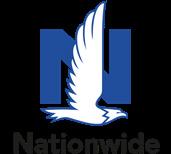


• Scalable, industry-relevant programs that cost about half the national average.*
• Flexible courses that work around your employees’ schedules.
• Dedicated mentors to ensure your employees have the support they need.
• Completion rates that are higher than the national average.
*WGU average annual bachelor’s tuition rates are nearly 40% less than the national average, compared to national rates reported by the Integrated Postsecondary Education Data System. WGU average rate does not include rates for WGU Bachelor of Science, Nursing Prelicensure program.
WGU HAS EXPERIENCE

With over 300 existing partnerships, we’re no stranger to helping employees and employers across multiple industries.
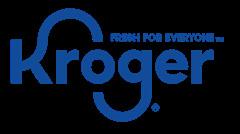
98% of employers said graduates met or exceeded job expectations.*
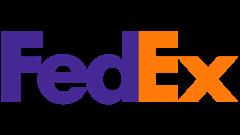
95% of employers said they would hire another WGU graduate.*

ACCREDITATIONS

WGU is regionally accredited, the highest form of accreditation, by the Northwest Commission on Colleges and Universities (NWCCU).

READY TO BECOME A PARTNER? Contact T Tuulllly y L Laalle e (Senior Manager, Regional Strategic Partnerships) at t tuulllly y l laallee@@wwggu u e eddu u or 9 90044--778888--4466777 to find out how high a partnership with WGU can take you.
*2020 Harris Poll of 300 employers of WGU graduates.
Visit WGU at booth 4010 during the SHRM Annual Conference in Las Vegas and learn more about WGU and our new MSHRM launching in November!
wgu.edu/partnerships


















































 amber.quarles@wgu.edu
amber.quarles@wgu.edu































 Johnny C. Taylor, Jr. President and CEO of the Society for Human Resource Management
Johnny C. Taylor, Jr. President and CEO of the Society for Human Resource Management




 LeeAnn B. Foster | Head Coach Leadership & HR Consultant +1 865-719-1177 mobile
LeeAnn B. Foster | Head Coach Leadership & HR Consultant +1 865-719-1177 mobile


















 7 Members of the 2023 Alabama SHRM State Council and conference committee. 8 Mike Bean, owner and consultant of PassionHR. 9 Columbia Southern University was an exhibitor. 10 The UKG booth at the Expo 11 Some of the attendees at the 2023 Alabama SHRM Conference
7 Members of the 2023 Alabama SHRM State Council and conference committee. 8 Mike Bean, owner and consultant of PassionHR. 9 Columbia Southern University was an exhibitor. 10 The UKG booth at the Expo 11 Some of the attendees at the 2023 Alabama SHRM Conference



 Dr. Kathy Tuberville, SHRM-SCP, Associate Professor of Teaching at the University of Memphis Fogelman College – Department of Management, and Advisor for the University of Memphis Student Chapter
Dr. Kathy Tuberville, SHRM-SCP, Associate Professor of Teaching at the University of Memphis Fogelman College – Department of Management, and Advisor for the University of Memphis Student Chapter


















































































